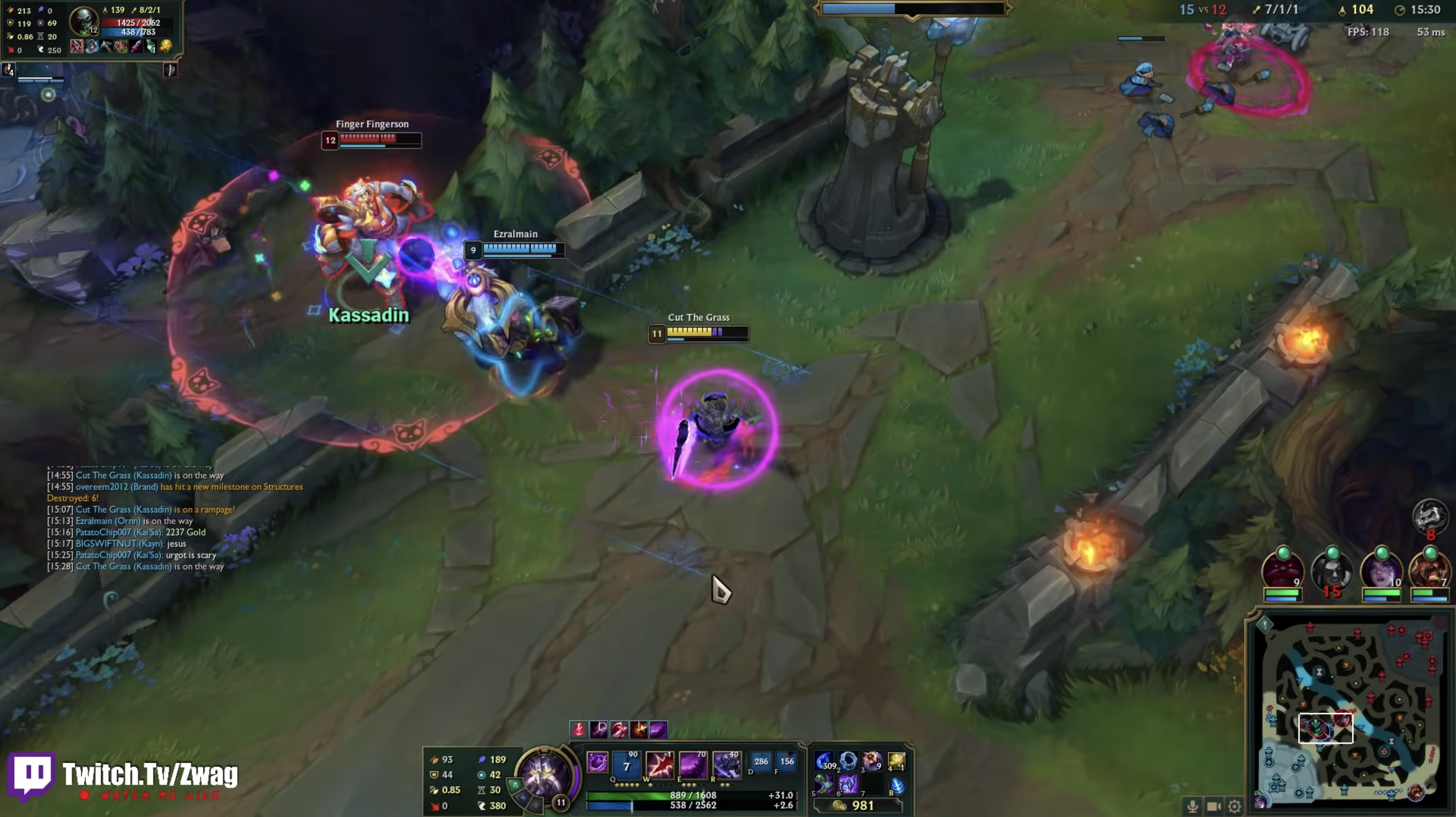This week, I’ll discuss the massively popular computer game “League of Legends” with respect to its balancing design. League of Legends (AKA “League”) is a multiplayer online battle arena (MOBA) developed by Riot Games. It is a team-based strategy game where two teams of five distinct characters face off against each other with the goal of destroying the other’s base. We can deduce that League’s target audience is players of age 13+ given by its ESRB “Teen” rating. League of Legends is best characterized as fulfilling the “challenge” kind of fun as players compete against each other’s strategies to overcome the other. League might also fulfill the “fellowship” kind of fun given that players work within a team to accomplish their goal, though one should note that League has a particular reputation for being socially toxic in-game.
Having been in near-constant development since 2009, League of Legends has matured greatly as a game. Its 13-year-long log of patch notes, quick fixes, and rebalancings could fuel several TED talks of how one can deal with game balance in a constantly evolving game like League. Since League is a multiplayer game where — more or less — every player starts with the same resources, the types of game balance relating to single player and asymmetry do not apply. Instead, League is rife with balancing related to strategies and game objects.
The distinct abilities of each character (“champion”) in League of Legends gives the game its extensive replayability and excitement. Some champions are beefy tanks who are meant to dive deep into the enemy team and disrupt their attack while others are delicate long-range mages who can deal blows from a whole screen length away. Some champions flourish by dealing sustained damage over time, while others work to delete an enemy as quickly as possible. What I’m trying to get at is this: in League of Legends, there are a variety of strategies that tend to balance each other out. In this way, playing certain champions in League is like playing a fuzzier version of rock-paper-scissors. Delicate mages easily delete squishy sustained-damage-dealers but are just as easily countered by beefy deep-divers or speedy assassins. Those beefy tanks are susceptible to ruin by sustained-damage-dealers, while the speedy assassins can be locked down by a skilled disruptor mage.
League has a deep history of balance as it relates to game objects as well. As players kill in-game monsters and enemy objectives, they collect gold that they can spend at their base to buy items. These items boost the abilities of each champion in unique and distinct ways, and often synergize with the individual strengths of the champions themselves. Riot Games leverages the transitive, intransitive, and fruity methods to balance these items.
In terms of transitive balance, League is a bit hard to pin down. In general, the cost of each item scales more-or-less linearly with the stat boosts each items gives; however, the exact cost-benefit ratio is hard to pin down as advanced items tend to have functionality beyond the simple stat boosts. In this common case, items within a certain stat vertical are themselves fruity — an item that offers +10 ability power and added wave clear is hard to compare against an item that offers +20 ability power and an on-hit effect.
With respect to intransitive balance, League has many. Much like the champions, many items in League play like fuzzy rock-paper-scissors. A tanky champion might want to build health items for added health points — however, this is at the opportunity cost of purchasing items that lend the champion greater killing power, or another item that lends the champion the ability to cast their spells more often. On the other hand, an enemy facing a health-stacked tanky champion might build an item that deals additional damage based on the enemy’s max health. In this way, the enemy can counter the tanky champion’s “rock” by purchasing “paper”. This rock-paper-scissors plays out in many different builds in League of Legends. If an enemy builds ability power, you can build magic resistance. If they build attack damage, you can build armor. If they build life steal, you can build burning.



